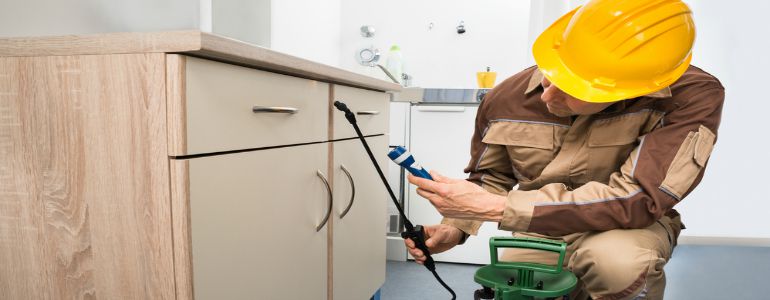Bed Bug Dog Detection: Find Infestations Early for Peace of Mind!
Bed Bug Dog Detection: Find Infestations Early for Peace of Mind!
Blog Article
Professional Parasite Control Techniques for Long-Term Outcomes
Specialist pest control methods encapsulate a thorough strategy that begins with a complete inspection and assessment, complied with by exact bug identification to understand their behavior patterns. The application of Integrated Insect Administration (IPM) concepts, combined with eco-conscious therapies, develops the foundation of sustainable bug obliteration.
Inspection and Assessment
Upon entering a residential property for bug control solutions, the first action is a complete examination and analysis to recognize the degree of the invasion and identify the most effective therapy plan. Specialist parasite control specialists are trained to meticulously check out the properties, trying to find signs of bug activity such as droppings, munch marks, nests, or any kind of architectural damage. They will certainly additionally examine the conditions that might be drawing in insects, such as food sources, water leakages, or entrance factors.

Pest Identification and Habits

Furthermore, recognizing the actions of the recognized pest is essential to implementing effective control measures. For example, recognizing where bugs nest, what they eat, and their task patterns can aid pest control specialists devise approaches to remove them successfully. Some parasites may be nocturnal, while others are extra energetic during the day. This understanding permits the application of therapies at ideal times for maximum performance.
Integrated Parasite Monitoring (IPM)
Integrated Bug Monitoring (IPM) strategies incorporate multiple methods to regulate and prevent insect invasions in a lasting and ecologically pleasant manner. bed bug exterminator. By integrating approaches such as biological control, habitat control, modification of cultural methods, and making use of resistant ranges, IPM intends to minimize using chemical pesticides
Among the vital principles of IPM is the emphasis on avoidance. This proactive method entails monitoring insect populaces routinely to find any prospective problems prior to they rise. By identifying insect issues beforehand, next page pest control steps can be executed quickly and properly.
Additionally, IPM promotes using safe parasite control approaches whenever feasible. This can include employing natural predators of the insects, introducing helpful pests, or making use of scents to interfere with mating patterns. By minimizing dependence on chemical pesticides, IPM not just shields the setting but additionally helps preserve an equilibrium in the environment.
Environmentally-Friendly Therapies
Executing eco-conscious strategies in parasite control procedures can effectively resolve invasions while focusing on environmental sustainability. Environmentally-friendly therapies focus on minimizing the influence of insect control approaches on environments, non-target organisms, and human health and wellness.
Another secret facet of environmentally-friendly treatments is the usage of organic and biodegradable products that damage down rapidly without leaving harmful residues in the environment. Organic pesticides derived from plants like chrysanthemums or neem use effective bug control while positioning marginal risk to non-target types. Using techniques click for more info like warmth treatments or scent catches can target particular pests with accuracy, reducing the general ecological influence of pest control practices.
Continuous Surveillance and Upkeep
Routine assessments by experienced professionals are essential to identify any type of signs of parasite activity, examine the efficiency of previous therapies, and make adjustments to the insect control plan as needed. By keeping an eye on insect populations over time, parasite control professionals can track trends, prepare for prospective issues, and carry out precautionary measures to lessen the risk of future problems.
In addition to tracking, upkeep practices are crucial for lasting insect control success. This includes applying proper cleanliness steps to remove visit this website potential food and water sources for bugs, sealing entry indicate stop parasites from entering the facilities, and dealing with any kind of structural issues that can help with parasite problems (exterminator near me). By including continuous tracking and upkeep right into an integrated pest management technique, services can make certain a pest-free atmosphere and secure their residential property versus expensive damage and health and wellness dangers
Final Thought
In final thought, making use of expert insect control methods such as complete examination and evaluation, precise bug recognition and understanding of their actions, incorporated insect administration methods, environmentally-friendly therapies, and continuous tracking and maintenance are vital for accomplishing long-term outcomes in pest control. By executing these methods, people can properly handle insect infestations and keep a pest-free atmosphere in a sustainable manner.
Report this page